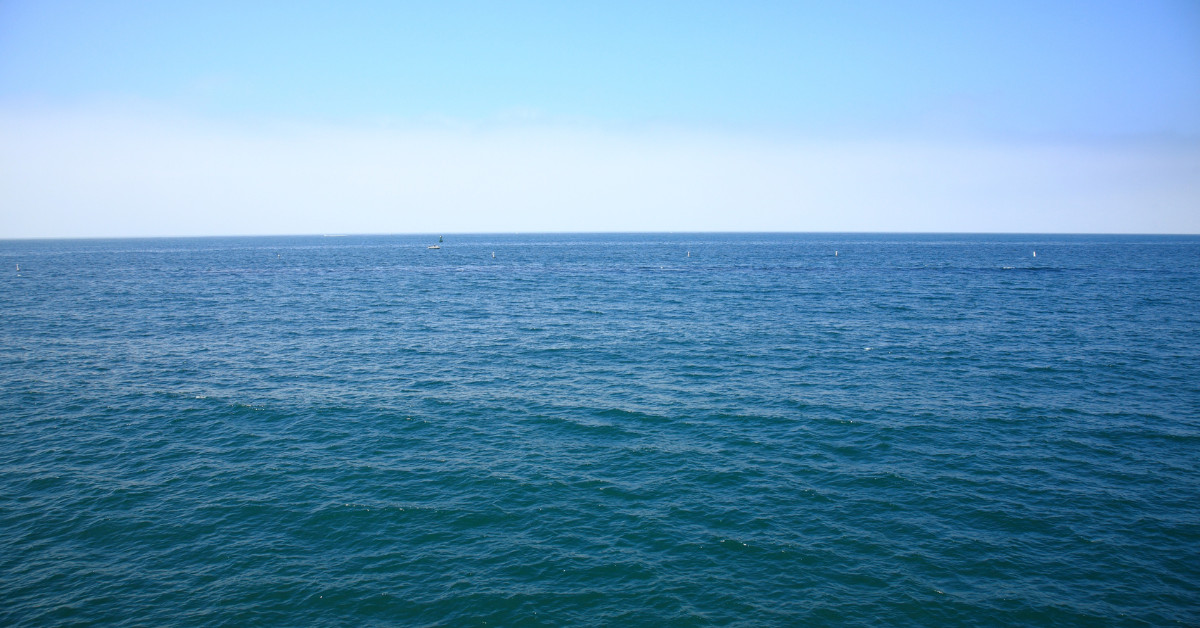 A serene ocean vista under a clear blue sky.
A serene ocean vista under a clear blue sky.
For those who have journeyed across the vast expanse of the Pacific, it’s a known fact that direct, straight-line flights over the ocean are rare. Instead, airliners typically follow curved paths that often traverse over landmasses. If you’re considering a career as a flight dispatcher, understanding the intricacies of planning routes from one side of the Pacific to the other is crucial. Sheffield School of Aeronautics, a leading flight dispatcher school, provides insights into why transpacific flight planning requires special considerations. Do airplanes fly over the Pacific Ocean? Let’s explore the reasons behind flight paths across this massive body of water.
Why Curved Routes Dominate Transpacific Flights
The Pacific Ocean is the largest ocean on Earth, and crossing it in a direct line would necessitate immense fuel reserves. Commercial flights commonly adopt curved routes because, surprisingly, these paths are often shorter than a straight trajectory on our spherical planet. This might seem counterintuitive, but on a globe, the shortest distance between two points isn’t always a straight line on a flat map. Furthermore, weather patterns and prevailing winds play a significant role in determining the most cost-effective and safest routes.
Curved routes offer additional advantages in terms of safety and fuel efficiency. By choosing paths that incorporate more land coverage or routes that stay within a few hours’ flying distance from coastal airports—a concept known as Extended Range Operations (ETOPS)—aircraft maintain greater access to emergency landing sites. In the unlikely event of an emergency over the mid-Pacific, search and rescue operations would be exceptionally challenging and time-consuming.
Regulatory Framework for Pacific Ocean Flights
Navigating the Pacific skies involves strict adherence to regulatory guidelines to guarantee flight safety and operational effectiveness. The Federal Aviation Administration (FAA) sets forth comprehensive regulations for flights in oceanic and remote airspace, notably in Advisory Circular AC 91-70B.1.
These regulations detail necessary authorizations, equipment benchmarks, and operational protocols for extended oceanic flights. Key aspects include compliance with Performance-Based Navigation (PBN) standards and maintaining robust communication systems in areas with limited radar coverage. Flight dispatchers must have a thorough grasp of these regulations to meticulously plan transpacific routes that are both safe and compliant.
Westbound Exceptions: US to Australia and New Zealand Routes
Australia stands out as a frequent destination for transpacific flights originating from the United States. The substantial distance between these continents means aircraft spend considerable time flying over the ocean. Weather hazards, particularly thunderstorms, which pose significant risks to aviation, are more prevalent over water. Airlines sometimes aim to minimize oceanic flight time or implement ETOPS for these routes. Additionally, airlines may opt for routes with fuel stops at airports across Asia to reduce fuel costs. While some aircraft are capable of transpacific flights, these journeys typically last between 11 to 12 hours.
However, under normal circumstances, westbound flights from the U.S. to destinations like Australia and New Zealand often traverse the Pacific directly. This is generally the most time and fuel-efficient approach and is considered safe with modern aircraft capabilities.
Other scenarios where more direct Pacific crossings occur are flights between destinations at higher latitudes. These routes can shorten distances and capitalize on favorable wind conditions. For ETOPS flights, the availability of en-route alternate airports also influences route decisions over the Pacific.
Technological Advances in Transpacific Flight Planning
Technological progress has revolutionized transpacific flight operations, enhancing both safety and efficiency. Modern aircraft boast advanced navigation systems enabling precise route planning and real-time adjustments to account for weather and air traffic. The introduction of Trajectory-Based Operations (TBO) further refines flight paths, leading to reduced fuel consumption and a smaller environmental footprint. Organizations like NASA have been instrumental in pioneering these technologies to improve the predictability and management of oceanic flights.2
For flight dispatchers, staying informed about these technological advancements is vital. Utilizing these tools enhances decision-making and reinforces flight safety protocols in transpacific operations.
Discover More with Sheffield School of Aeronautics
Are you considering a career as a flight dispatcher? Sheffield School of Aeronautics offers extensive courses and resources designed for aspiring FAA dispatchers. Beyond answering questions like “Do airplanes fly directly over the Pacific Ocean?”, we provide comprehensive training covering all essential aspects of flight dispatch. Our courses include international flight planning and flight weather planning, among many others. Contact us today to learn why we are a leading choice for aircraft dispatching education.
SOURCES:
RELATED READING: